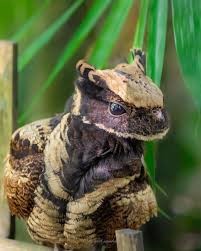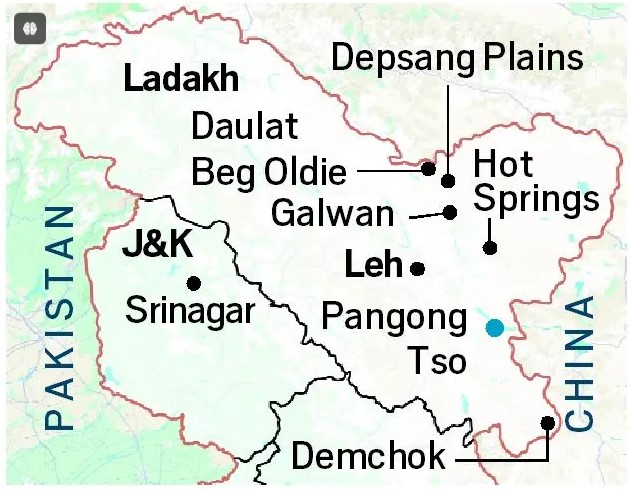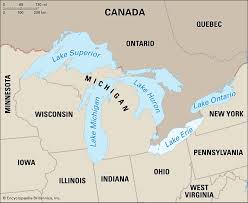Bhu-Aadhar or ULPIN
Rural development ministry’s portal data reveals that only 30% of the rural land parcels have Bhu-Aadhaar, Centre pushes for 100% completion by 2026.
- Bhu-Aadhaar is also known as Unique Land Parcel Identification Number (ULPIN).
- Launched in – 2021.
- ULPIN - It is an initiative to give a 14-digit alpha-numeric identity to each land parcel. The ULPIN contains
- State code
- District code
- Sub-district code
- Village code
- Unique plot ID number
- It is generated using the longitude and latitude coordinates of the land parcel.
- It is part of the Centre’s Digital India Land Records Modernisation Programme (DILRMP).
DILRMP is a Central Sector Scheme aims to modernize the management of land records, reduce land/property disputes, and enhance transparency in land transactions.
- ULPIN is to streamline and bring uniformity to the process adopted by states in assigning unique identification numbers to land parcels.
- Once the ULPIN is generated, it is stamped on the physical land record document held by the owner.
- The same ULPIN will be permanently attached to the plot of land.
- Even if the land is transferred, sub-divided, or undergoes any change, the ULPIN will remain the same for that geographic boundary.
- Objectives
- To assign a unique ID to each plot of land for easy identification and retrieval of records
- To create accurate digital land records with details of land owners, plot boundaries, area, usage, etc.
- To link land records and property registration processes
- To facilitate online delivery of land record services
- To assist in government planning by maintaining updated land data
- Coverage - Andhra Pradesh was the 1st State to complete 100% ULPIN coverage.
- The States of Karnataka, Odisha, Telangana, Madhya Pradesh and Chhattisgarh have achieved 60-90% ULPIN coverage.
- Uttar Pradesh, Bihar and Assam are lagging behind in ULPIN implementation due to administrative and operational challenges.
Reference
The Print | Bhu-Aadhaar or ULPIN
Great Eared Nightjar
The Great Eared Nightjar is one of the most mesmerizing creatures, due to its striking resemblance with a mythical dragon, especially when perched.
- The Great Eared Nightjar is a dragon-like appearance bird native to Southeast Asia.
- Scientific Name - Lyncornis macrotis.
- Family - Caprimulgidae.
- Nomenclature - The name 'nightjar' comes from the bird's nocturnal habits and its calls are often called as jarring.
- Appearance - They have large, forward-facing eyes, big head, and intricate patterning of brown, black, and gray on its feathers.
- It has a white throat band but has no white on its wings or on its tail.
- Habitat - These birds prefer to dwell in thick forests, woodlands and mangroves. Instead of making nests really high up on trees, they typically roost on the ground or low branches.
- Distribution - It can be found roaming the skies from parts of India and Sri Lanka to the Malay Peninsula, the Philippines, and Indonesia.
- Diet – Insectivores include moths, beetles, and other nocturnal insects.
- Breeding - They blend into surroundings easily and lay eggs on the ground.
- Flight - Nightjars are well known for their silent flight, which is due to the structure of their feathers.
- Hence they can easily sneak up on their prey and also move away without anyone noticing, if faced with a potential threat.
- Conservation status
- Threat - Habitat loss.

Reference
Times of India | Great Eared Nightjar
World Polio Day
World polio day was organized recently by Rotary International in collaboration with global health organisations like the World Health Organization (WHO) and UNICEF.
- World Polio Day is observed annually on October 24.
- The Day was established by Rotary International to commemorate the birth of Jonas Salk, who led the first team to develop the vaccine against the disease in the 1950s.
- Aim - To raise awareness about the importance of polio vaccination and to recognize progress made toward a polio-free world.
- Theme, 2024 - A Global Mission to Reach Every Child.
Polio
- Polio (Poliomyelitis) is a highly viral infectious disease, mainly affecting children under 5.
- Transmission - The virus is spread from person to person, mainly through the faecal-oral pathway or, less frequently, by a shared object (such as contaminated food or water).
- It multiplies in the intestine, from where it can enter the nervous system and cause paralysis.
- Severity - There are cases of paralytic poliomyelitis due to a loss of viral attenuation in the oral polio vaccine (OPV), known as vaccine-associated paralytic poliovirus (VAPP).
- Vaccine-associated paralytic poliovirus (VAPP) is very rare, occurring approximately 3.8 times per lakhs of cases in countries using the oral poliovirus vaccine. It can cause sometimes death.
- Prevention - Along with vaccination, it is required to wash hands, boil drinking water, and give only breastmilk to babies under 6 months of age.
Over the past 35 years, cases of wild poliovirus have decreased by more than 99%.
- There is no cure for polio, it can only be prevented through a vaccine.
- Vaccination
- Inactivated Polio Vaccine (IPV)
- Developed by - Jonas Salk in 1955.
- Administration - Given via injection.
- Characteristics - IPV contains a killed virus, making it safe but less effective at inducing immunity in the intestines compared to oral vaccines.
- Oral Polio Vaccine (OPV)
- Developed by - Albert Sabin in the early 1960s.
- Administration - Administered orally, often in a sugar cube form.
- Characteristics - OPV contains a weakened live virus, which not only protects the vaccinated individual but can also help immunise others in the community through "herd immunity.
- In India - In 2009, India had reported 741 polio cases, the highest in the world. In January 2011, India reported its last polio case.
- India was declared polio-free in 2014 by the World Health Organization (WHO).
|
Global Polio Eradication Initiative
|
- The Global Polio Eradication Initiative (GPEI) is a public-private partnership that aims to eradicate polio worldwide.
- Goal - To ensure that no child will ever be paralyzed by polio.
- Partners
- Led by national governments, the GPEI's partners include:
- World Health Organization (WHO)
- Rotary International
- US Centers for Disease Control and Prevention (CDC)
- United Nations Children's Fund (UNICEF)
- Bill & Melinda Gates Foundation
- Gavi, the Vaccine Alliance
- The GPEI uses a monitoring and evaluation (M&E) matrix to track progress and adjust to risks. The matrix includes milestones, outcomes, and key performance indicators (KPIs).
|
Reference
Indian Express | World Polio Day
India-China LAC Agreement
India has announced a pact on patrolling along the LAC, which is expected to set in motion the process ultimately leading to normalization.
- India and China have made progress in resolving the military standoff along the Line of Actual Control (LAC) in eastern Ladakh, with both nations reportedly agreeing to restore patrolling rights.
- Regions - Depsang Plains and Demchok region, allowing their troops to resume patrolling up to their old patrolling points along the LAC.
- The frictions between the two sides in the Depsang Plains and Demchok region have long been regarded as "legacy issues" predating the Chinese incursions of 2020.
- The Depsang Plains are located in the north of Ladakh and Demchok in the south.
- At present, 7 friction points exist in eastern Ladakh.
- These include PP 14 (Galwan), PP 15 (Hot Springs), PP 17A (Gogra), the north and south banks of Pangong Tso, the Depsang Plains, and Charding Nullah in Demchok.
- The agreement allows Indian troops access to patrolling points (PP) 10 to 13 in the Depsang Plains, while in Demchok, patrolling will extend to Charding Nullah.
- Mutual agreements have reportedly been reached for the eastern theatre as well, particularly in sensitive areas of Arunachal Pradesh.
- Friction points like Galwan Valley and Pangong Tso remain unchanged.
- Further discussions on other sectors in the eastern region will also take place between the two sides at a later stage.
- Moreover, both sides will exchange their patrol schedules with each other.
- In case of conflicting dates or times, adjustments will reportedly be made by mutual consent.

Reference
Indian Express | India-China LAC Agreement
Lake Erie
Algae bloom in western Lake Erie was moderate compared to previous years, getting rid of problem algae starts with giving it less food.
- Lake Erie is one of the 5 Great Lakes of North America and the 4th largest by surface area.
- It is located on the border between Canada and the United States.
- It is primarily bordered by the states of Ohio, Pennsylvania, and New York, as well as the Canadian province of Ontario.
- Lake Erie is the shallowest of the Great Lakes, which contributes to its warmer temperatures and greater susceptibility to pollution and algal blooms compared to the other lakes.
- Tributaries - The Detroit, Huron, and Raisin rivers are the main tributaries to Lake Erie.
- Discharge - The Niagara River carries the water from Lake Erie to the east.
- It is a key part of the St. Lawrence Seaway.
- Pollution - The Great Lakes have been affected by pollution, and in the late 20th century, the U.S. and Canada investigated ways to reverse the damage.
- Ice levels - The Great Lakes have experienced historically low ice levels for two years in a row.

Reference
Physics Org | Lake Erie

